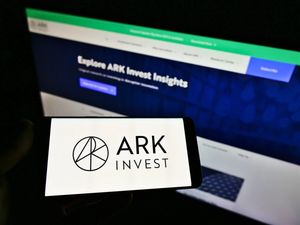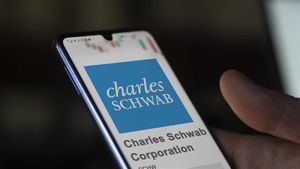
In an increasingly digitized world, the line between truth and deception is blurring at an alarming rate, thanks to the rapid advancement of artificial intelligence. A recent incident involving a deepfake video of former President Donald Trump announcing "medbeds" has cast a stark spotlight on the growing concerns and controversies surrounding AI-generated content and misinformation, illustrating the profound challenges of distinguishing truth from AI-fabricated narratives. This event serves as a potent reminder for investors and the public alike about the volatile impact synthetic media can have on public discourse, political landscapes, and, critically, financial markets.
The incident, occurring just days before our current date of September 29, 2025, underscores an escalating threat that transcends mere political theater. It highlights how easily sophisticated AI tools can be weaponized to create convincing, yet entirely false, narratives that can sway public opinion, manipulate market sentiment, and erode trust in established institutions. For readers of MarketMinute, this raises critical questions about the resilience of our information ecosystems and the potential for AI-driven misinformation to introduce unprecedented levels of volatility and risk into global financial markets.
The "Medbeds" Deception: A Case Study in AI-Fabricated Reality
The deepfake video in question was an expertly crafted piece of AI-generated content designed to mimic a legitimate Fox News segment. In the fabricated clip, an AI-generated version of Donald Trump's daughter-in-law, Lara Trump, appeared as an anchor. She introduced a synthetic Donald Trump who then proceeded to announce a fantastical new healthcare initiative featuring "MedBed hospitals" and "national Medbed cards" for every citizen. The concept of "medbeds" itself is a long-debunked conspiracy theory, popular among QAnon adherents, which posits that secret, miraculous healing technologies are being withheld from the public.
Several tell-tale signs ultimately exposed the video as a fabrication. Its low resolution, coupled with an "uncanny valley" effect in Trump's voice—which possessed a distinctly robotic intonation—were initial red flags. Furthermore, the font used for the Fox News chyron was incorrect, and Fox News (NASDAQ: FOXA) itself confirmed that no such segment ever aired on its network. Despite these indicators, the video was posted on Donald Trump's Truth Social (NASDAQ: DWAC) account on September 27-28, 2025. It remained live for approximately 12 hours, garnering over 3,000 likes before its eventual deletion. However, its brief presence was enough for it to be recorded and subsequently reshared across other social media platforms, including X (formerly Twitter). The removal of the video, rather than quelling its spread, ironically fueled further speculation among supporters, who sometimes interpreted its deletion as confirmation of a hidden truth.
The immediate impact of the "medbeds" video was a significant resurgence in public discourse around the fictional technology and the underlying conspiracy theory. Beyond the political implications, the incident sparked widespread criticism regarding the use of AI-generated content to mislead voters, particularly concerning health claims, and its potential to further erode trust in scientific and public health institutions. It also raised serious questions about the extent to which influential public figures might inadvertently or intentionally amplify deepfake technology, underscoring how synthetic media can dangerously blur the lines between undeniable fabrication and the perceived validation of existing fringe beliefs.
Navigating the AI Minefield: Winners and Losers in a Misinformation Age
The rise of AI-generated misinformation creates a complex landscape of winners and losers within the financial markets. Companies at the forefront of this challenge will see their valuations fluctuate based on their ability to adapt and innovate.
On the losing side are primarily social media platforms like Meta Platforms (NASDAQ: META), which owns Facebook and Instagram, and Alphabet (NASDAQ: GOOGL), which owns YouTube. These companies face immense pressure to moderate content, detect deepfakes, and prevent the spread of misinformation. Their failure to do so can lead to reputational damage, user attrition, advertiser boycotts, and increased regulatory scrutiny, potentially resulting in hefty fines and stricter operating environments. The "medbeds" video's spread on Truth Social (NASDAQ: DWAC) and subsequent resharing on X (formerly Twitter) highlight the ongoing struggle these platforms face in managing harmful content. Furthermore, financial institutions such as banks, investment firms, and asset managers like BlackRock (NYSE: BLK) are highly vulnerable. AI-generated misinformation can be used for sophisticated market manipulation, leading to panic selling or buying, as seen in May 2023 when AI-manipulated images falsely depicting an explosion near the Pentagon caused the Dow Jones Industrial Average to drop 85 points in just four minutes. Deepfakes also enable advanced fraud schemes, where fraudsters clone voices or create fake videos of executives to authorize fraudulent transfers, costing businesses hundreds of millions. Any publicly traded company is at risk of being targeted by deepfake-driven "short attacks" or reputational damage campaigns, which can severely impact their stock price and brand equity.
Conversely, a new segment of AI detection and cybersecurity companies stands to gain significantly. As the threat of deepfakes and AI-generated misinformation intensifies, the demand for robust detection and mitigation tools will surge. Companies like Microsoft (NASDAQ: MSFT), a key player in the deepfake AI market, are integrating AI ethics and safety measures across their products and developing tools like the Microsoft Video Authenticator. Google (NASDAQ: GOOGL) is also actively involved, not only in AI development but also in enhancing threat detection through acquisitions like cloud-security specialist Wiz. Intel (NASDAQ: INTC) and Veritone (NASDAQ: VERI) are also recognized as significant players in this burgeoning market. While some companies in this space are private, such as Clearview AI, Datambit, TruthScan, Blackbird.AI, OpenOrigins, Q Integrity, and Breacher.ai, their innovations signal a growing sector. These firms are developing advanced systems utilizing computer vision, machine learning, and proprietary algorithms to identify deepfake audio, video, and text, offering crucial services to businesses, governments, and even individuals seeking to verify digital content.
The Broader Significance: Eroding Trust and Systemic Risks
The "medbeds" deepfake is not an isolated incident but a clear symptom of broader industry trends where the proliferation of accessible AI tools is rapidly blurring the lines between authentic and fabricated reality. The ease with which convincing deepfakes can now be created by individuals with minimal technical expertise lowers the barrier to entry for malicious actors, expanding the scale and sophistication of potential attacks. This event fits into a disturbing pattern of AI-driven misinformation that has already demonstrated its capacity to impact financial markets, from false posts on X (formerly Twitter) about the SEC approving an iShares Bitcoin spot ETF leading to a brief price spike, to the collapse of Silicon Valley Bank (private, now acquired) in 2023, where disinformation contributed to rapid withdrawals and financial instability.
The implications for regulatory and policy frameworks are profound. Governments and international bodies are grappling with how to regulate AI-generated content, enforce accountability for harmful outputs, and protect public discourse without stifling innovation. There is an urgent need for clearer guidelines on content provenance, digital watermarking, and the legal liabilities of AI developers and platform operators. This incident will likely accelerate calls for stricter content moderation policies, greater transparency from AI companies, and potentially new legislation aimed at combating synthetic media manipulation, especially concerning elections and financial markets. The challenge lies in creating policies that are effective, enforceable, and do not inadvertently suppress legitimate expression or innovation.
Historically, propaganda and misinformation have always existed, but the speed, scale, and believability offered by generative AI represent an unprecedented challenge. Unlike traditional disinformation, deepfakes can bypass human skepticism by appealing directly to visual and auditory senses, making them incredibly potent. The "medbeds" video, by leveraging a known conspiracy theory, demonstrates how AI can validate and amplify existing fringe beliefs, further entrenching divisions and making critical thinking more arduous for the average citizen. This creates systemic risks not only for individual companies but for the entire financial ecosystem, as widespread loss of trust in information can lead to irrational market behaviors, heightened volatility, and an environment ripe for exploitation.
What Comes Next: An Arms Race for Truth
Looking ahead, the landscape will be defined by an accelerating arms race between those who create AI-generated misinformation and those who develop tools to detect and combat it. In the short term, we can expect increased scrutiny on AI-generated content, particularly around high-stakes events like elections and critical financial announcements. Social media platforms and news organizations will be under immense pressure to deploy more sophisticated AI detection technologies and implement clearer policies for labeling or removing synthetic media. This will drive significant investment in cybersecurity and AI ethics research.
Longer term, the evolution of AI vs. detection will be a continuous battle. As AI generation tools become more advanced, so too must the detection mechanisms. This will necessitate strategic pivots for many technology companies, focusing not just on developing powerful AI but also on building robust safeguards against its misuse. Market opportunities will emerge in areas such as digital forensics, identity verification, and AI-powered content authentication services. Companies like OpenOrigins, which provides deepfake detection technology and tools for data verification and adding provenance to digital media, will likely see their offerings become indispensable. The financial sector, in particular, will need to adapt by integrating advanced deepfake detection into their fraud prevention systems and developing protocols for verifying the authenticity of critical communications.
Potential scenarios range from a future where AI-generated content is universally watermarked and easily verifiable, to a more dystopian outcome where the public loses all trust in digital media, leading to widespread confusion and an inability to discern truth from fiction. The key challenge for investors, policymakers, and the public will be to foster a resilient information environment, promoting media literacy and investing in technologies that can safeguard against manipulation. The "medbeds" incident serves as a stark warning: the future of information integrity, and by extension, market stability, hinges on our collective ability to navigate this complex and rapidly evolving technological frontier.
A Call for Vigilance: Investing in a Post-Truth Era
The "medbeds" deepfake is a critical inflection point, highlighting the urgent need to address the growing threat of AI-generated content and misinformation. The key takeaway is clear: the digital information landscape is fundamentally changing, introducing new forms of risk and demanding a renewed commitment to critical thinking and verifiable sources. For financial markets, this means a heightened awareness of how synthetic media can be used for market manipulation, fraud, and reputational damage, potentially leading to significant and rapid shifts in asset prices.
Moving forward, investors must cultivate a discerning eye, scrutinizing the provenance of information, especially when it pertains to market-moving news or company-specific announcements. The market will increasingly favor companies that demonstrate strong governance around AI ethics, invest in robust cybersecurity, and contribute to solutions for detecting and mitigating misinformation. The "arms race" between AI generation and detection will create both challenges and opportunities, with companies developing cutting-edge deepfake detection and digital authentication technologies poised for growth.
What investors should watch for in the coming months includes regulatory developments surrounding AI and content authenticity, the adoption rates of deepfake detection technologies by major platforms and financial institutions, and any significant incidents of AI-driven market manipulation. The resilience of our financial systems and the integrity of public discourse depend on a proactive and collaborative approach to this evolving threat. The era of unquestioned digital content is over; vigilance, critical analysis, and investment in truth-preserving technologies are now paramount.
This content is intended for informational purposes only and is not financial advice






